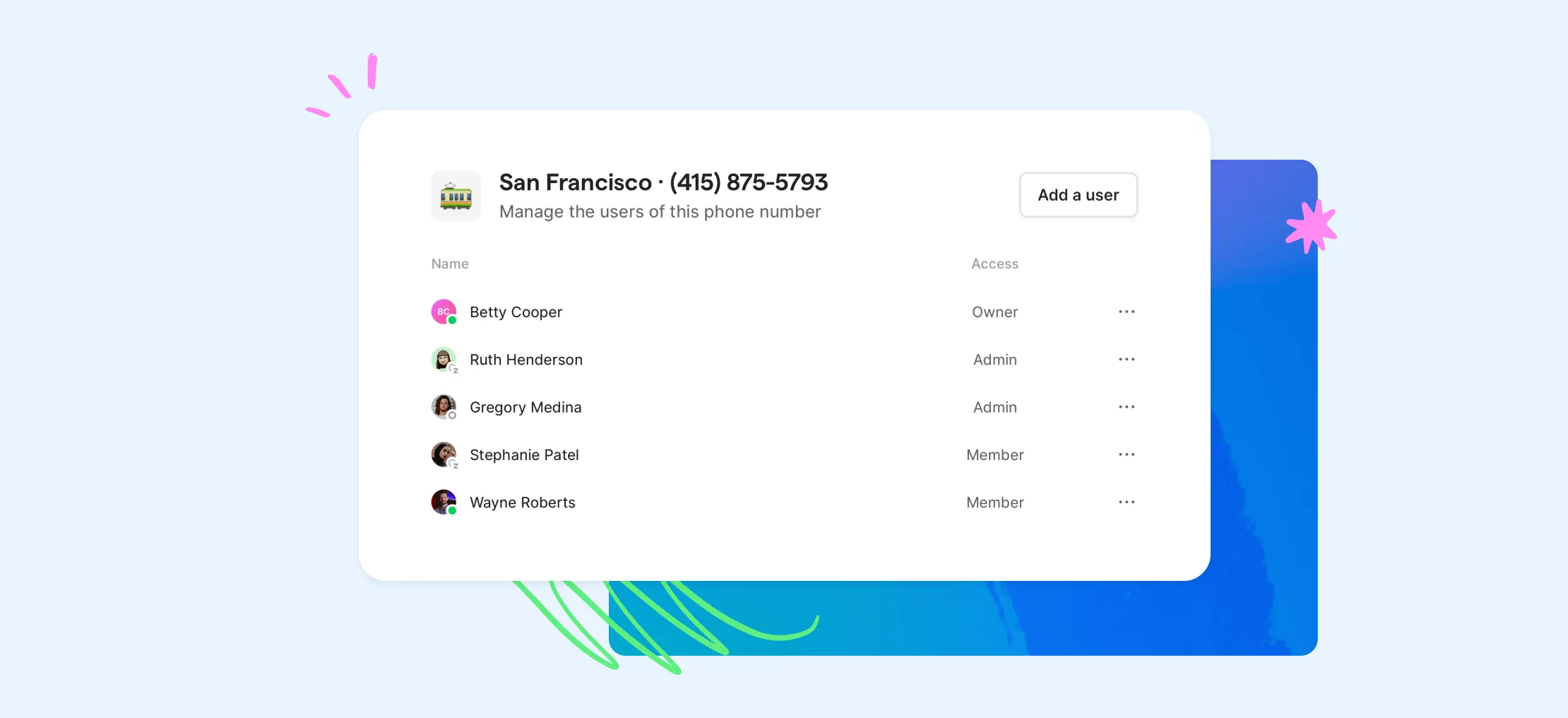Have you ever wanted to give a colleague access to your phone so they could respond to calls or messages on your behalf? Or set up a phone number that rings multiple people on the team?
Whether it’s for sales, customer service, or internal operations, the ability to have multiple people behind a phone number leads to shorter response times and less time spent on getting caught up with your team. You can team up on communications with your team, delegate tasks, and stay up to date on projects more easily.
A shared phone number is like a shared email inbox, but for a phone. It allows multiple people to call and text from a single phone number.
There are many ways a shared phone number can be useful for you and your team:
- Customer support phone number
- Inbound sales phone number
- The main phone number for the company that’s used on company registration documents, government services, etc. and shared among the founding team
- A central line for priority / VIP customer support
- Being able to invite your assistant to your phone number to help respond to calls and messages
- A shared phone number for your office buzzer, delivery services, etc.
- Use mobile devices and laptops instead of traditional desk phones
3 ways you should avoid sharing access to a phone number with a colleague
Not all solutions to sharing a phone number with your team are built equally. These more outdated solutions can snowball into all sorts of issues:
- Forward incoming calls to a colleague: If you’re using your phone number both for business and personal, they’ll get both your personal and work calls. Text messages don’t get forwarded.
- Buy a virtual phone number and forward calls from it to multiple numbers: That means team members can’t call out of the original phone number. There’s no track record of outbound calls. And just as before, texts aren’t forwarded.
- Set up a business phone system with an auto-attendant (IVR) and extensions: It could work for a larger team or a company with different departments. For a small team though it’s overkill. Plus, how do you text an extension?
Luckily, there’s a better way to share a phone number with a colleague or a team.
OpenPhone is one of the best ways to share a phone number with your team members giving you a shared calling and SMS inbox. Here’s how you can get a shared phone number on OpenPhone:
1. Create an account with OpenPhone
2. During sign up, select your city or area code in the US or Canada to pick your phone number. You can also get a 1-800 toll-free phone number.
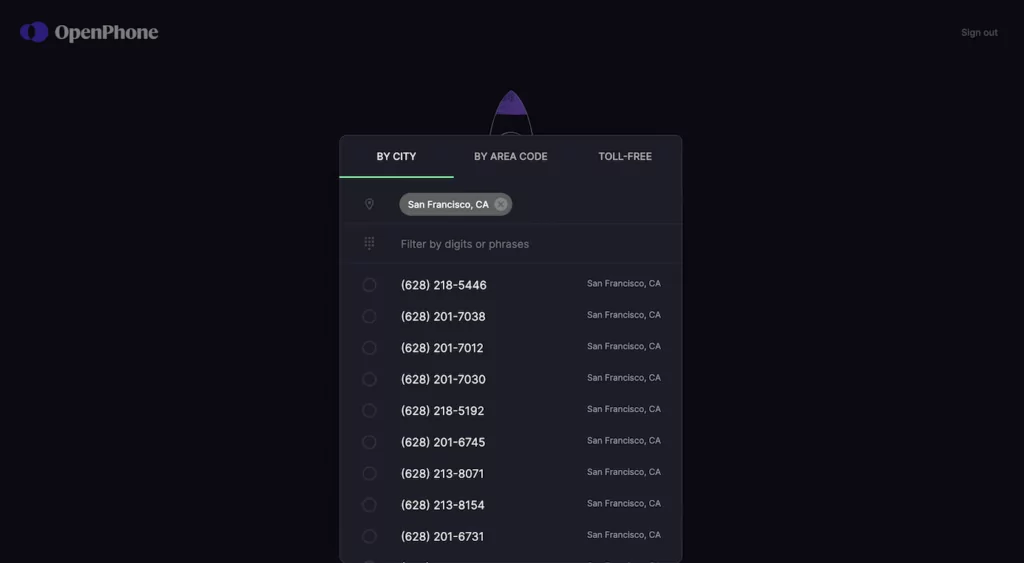
You can pick a local number in virtually any city in the US and Canada as well as a 1-800 toll-free number
3. Invite the team member(s) you’d like to have access to your phone number via the Admin Dashboard.
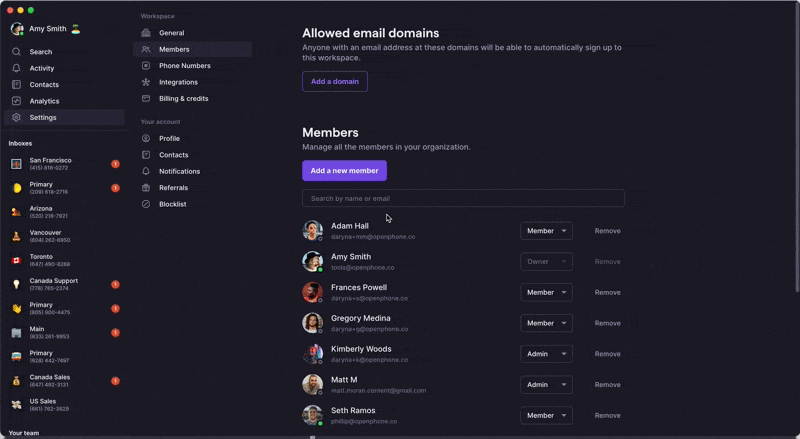
Invite a team member to share a phone number
4. That’s it! They’ll get an email with the link to the mobile & web apps.
- Everyone gets calls: When you get a call, everyone with access to the phone number will have their mobile phones or computer ring as long as they don’t have Do Not Disturb on. You can set the ring order as all at once, random or custom. The first person to pick up stops ringing for others. You can place concurrent calls so the number is never “busy”. If you’ve been enabling call forwarding to a teammate’s direct number any time you’re away, you can instead share your number so you still have visibility into any conversations that occurred once you return.
- Everyone gets messages and voicemails: When the shared number gets a message or voicemail, everyone sees it in their OpenPhone app. All messages, voicemail, and call history are synced so you know if a conversation was opened.
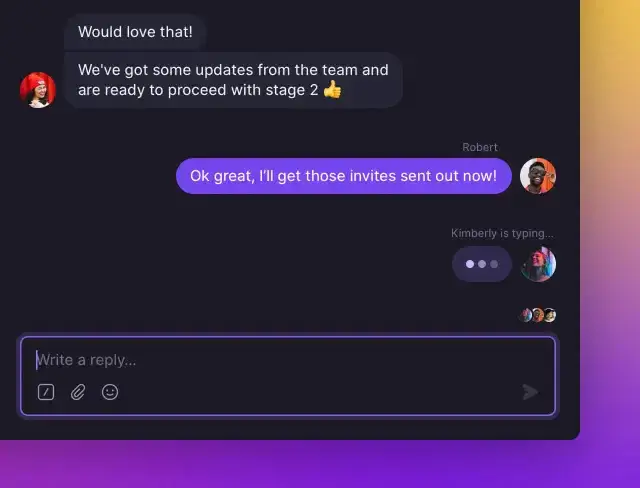
See who’s typing never send multiple replies to a customer again.
3. See who said what: Every outgoing message shows the team member who sent it so you can coach your team as needed. You can also see who made a call or accepted a call.
4. See who’s typing: You can see who’s drafting a response as they are typing. So you never send multiple replies to a customer again (I’ve been there)
5. Shared contacts: Your business address book is shared with everyone sharing the number. If someone adds the name or details of a customer, all team members will have that contact information on OpenPhone right away.
Learn more about how shared numbers work in OpenPhone and how to provide your team access to your OpenPhone number by watching the video below.
In case you need to convince your colleagues that a shared number is a no brainer, here are a few key benefits you can share.
1. Be more responsive via a team phone number
Shared phone numbers can help ensure no incoming calls or messages slip through the cracks and that your team responds before your customers look elsewhere. By assigning the ring order as all at once, random or custom, you can ensure your team never misses an important call.
If there’s someone at your organization that your customers trust as their point of contact you can also work together behind the scenes to make them appear superhuman. Find out how Guaranteed Rate does this with OpenPhone.
2. Split responsibility for incoming calls
Share the load by setting work schedules in OpenPhone so that your teammates are available during specific shifts.
Direct lines can also temporarily serve as shared numbers when someone on your team needs to take time off. Simply share access and your teammates can easily cover for them.
3. Get clear oversight into your team’s communication
Looking to continually provide a better customer experience? Having more visibility into how your team interacts with customers can unlock coaching opportunities that can even shorten your sales cycle. Learn how Ryna uses OpenPhone to improve their sales processes.
4. Create group phone numbers
As your team scales, you may need group numbers for different departments and teams.
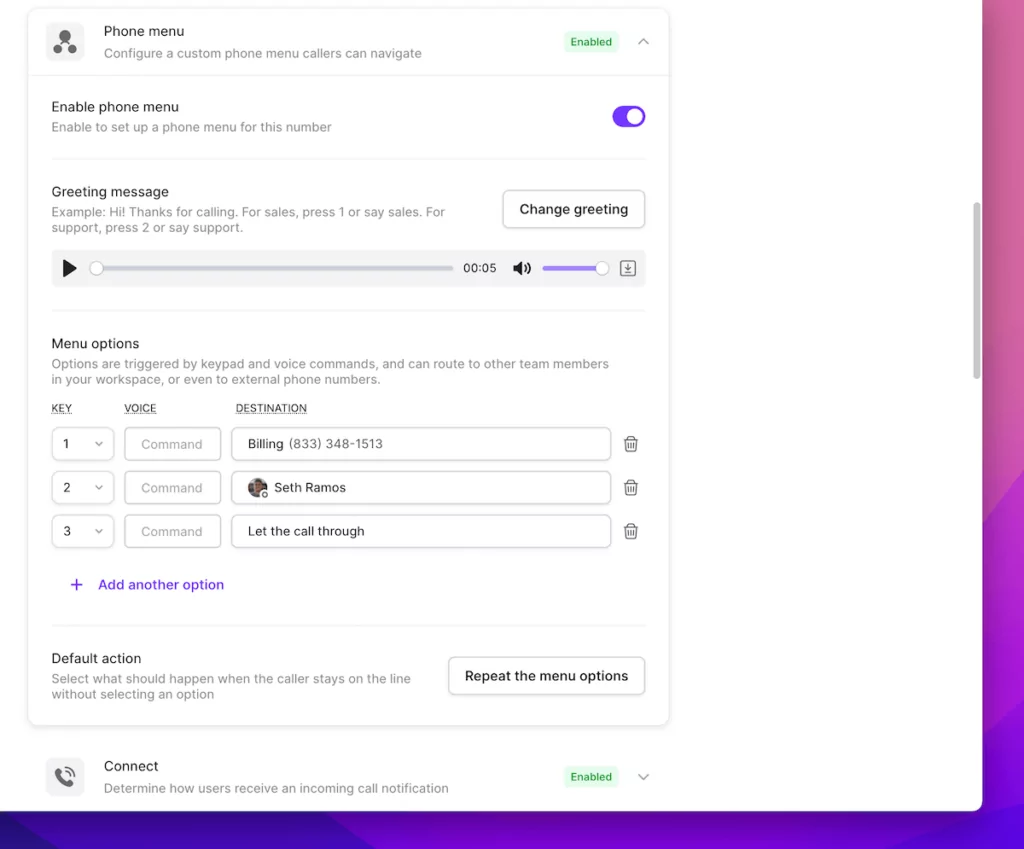
With OpenPhone you can easily have a main number containing a phone menu with menu options that automatically route to specific groups.
Does the recipient know there’s a team behind a phone number?
This question gets asked a lot. No, the recipient doesn’t know there’s a team behind a number. It looks like a regular conversation to them as you contact them from OpenPhone’s business phone number app – whether they send a message or call.
Get started with OpenPhone as your business’s phone system
We built OpenPhone to be the phone system for modern businesses. Here are some of the reasons OpenPhone benefits your business:
- Available for use with iOS, Android, Desktop, and Browser-based apps
- Manage your business contact lists and keep them separate from your personal connections
- Integrations with Slack and Gmail to keep you up to date on voicemails with voice to text messages
- Unlimited calling and text messaging
- Scheduled texts, auto-replies, and other business texting features
- Works in the US and internationally
- Crystal-clear audio quality
- Can set business hours
Get started with a free trial of OpenPhone.
